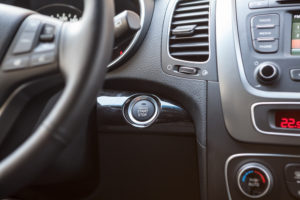Over the past few years, the dangers of distracted driving have become more well-known. According to a University of Nebraska Medical Center study, the national number of pedestrians being killed as a result of distracted driving has suffered an almost 50 percent increase, from 344 in 2005 to 500 in 2010. Distracted driving encompasses risky behavior while driving, including any activity that takes your focus away from your driving. According to Fernando Wilson, Ph.D., associate professor of the UNMC College of Public Health, one of the main reasons for the increase is the social acceptance of using cell phones while driving as well as the inability to enforce distracted driving as well as other safety regulations. Dr. Wilson also believes that statistics related to distracted driving tend to be under-reported, which makes it difficult to affect reasonable policies to decrease distracted driving.
Although the report does not document injuries, it does document trends and characteristics of pedestrians, bicyclists and other victim deaths. The report focuses on data from the Fatality Analysis Reporting System regarding crashes on public roads throughout the United States. Technology may be partially to blame as more and more vehicles are being equipped with onboard navigation systems, computers or dashboard displays.
Although it is dangerous enough to be distracted while driving a car, the problem becomes even worse when the distracted driver is operating a train or a bus. Last July, this issue attracted national attention when an 8 month old girl in a stroller was killed by a bus driver in New Jersey who was talking on a cell phone. The accident also injured seven bystanders. In Kansas City, a driver drug an 86 year old woman half a block after hitting her in a crosswalk when he reached down to grab something. Although regulations are starting to develop and be enforced for all drivers, professional drivers are starting to see changes in industry standards regarding operation of a vehicle with onboard technology. The U.S. Department of Transportation banned the use of hand-held phones while operating a truck or interstate bus in 2011.
Unfortunately, one of the major problems in enforcement is the lack of economic incentives for small companies to enforce safety while being competitive with larger companies. Some transit agencies have attempted to push safety practices, including the Dallas Area Rapid Transit (DART) who produced a flier on the dangers of distracted driving by focusing on a photograph taken of one of its own drivers reading a book laid across the steering wheel at a stoplight. Following the flier, DART began to incorporate lessons on distracted driving as part of its regular training process. The efforts of DART resulted in a 48 percent reduction in complaints from customers regarding distracted driving.
According to the National Highway Safety Administration’s website devoted to the dangers of distracted driving, the most serious offenders are young and inexperienced drivers, accounting for 16% of all distracted driving crashes. The website reports that at any given moment during daylight hours, over 800,000 vehicles are being driven by someone who is operating a cell phone while driving. The website sets for a Blueprint for Distracted Driving outlining the efforts being made nationwide to address the growing problem and reminds us all to take the pledge to commit to distraction-free driving. Remember, one text or call could cost you much more than a ticket.
Inserra & Kelley reminds you that your safety is always more important than taking a call or answering a text while driving.

The Legal Examiner and our Affiliate Network strive to be the place you look to for news, context, and more, wherever your life intersects with the law.










Comments for this article are closed.